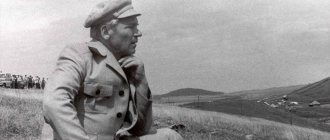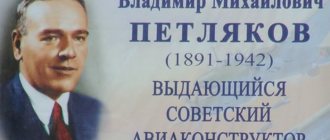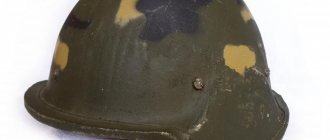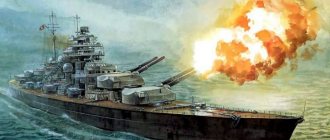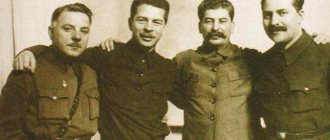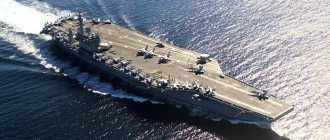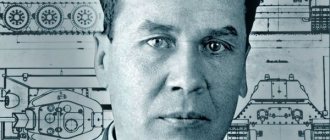Fedorov Vladimir Grigorievich is a famous Soviet engineer in the field of weapons. Thanks to the technical skills of Vladimir Grigorievich, the best weapon of those years was improved for the Russian Empire - an assault rifle. However, despite the unconditional talent of the gunsmith, the production of his military weapons was constantly stopped due to some circumstances. That is why the name of Vladimir Fedorov, who participated in the creation of small arms during the Second World War, still remains not so well known for many Russians. However, this article will tell you a lot about the gunsmith’s biography.
Biography of Fedorov Vladimir Grigorievich
The great engineer and designer was born on May 15, 1874 in the cultural capital of Russia - St. Petersburg.
The father of Vladimir Grigorievich Fedor worked as a caretaker of the Imperial Legal Building.
The biography of Vladimir Fedor is extremely diverse in its events, which suggests that the engineer was truly an outstanding mechanic.
Education of Vladimir Fedorov
At first, Vladimir Grigorievich Fedorov studied at the St. Petersburg State Gymnasium, where he received his secondary education, and after graduation he entered the Mikhailovsky Artillery School, after which he already had a special education. It was after graduating from college that Vladimir entered service in the army of the Russian Empire in 1895, where he served for two years as a platoon commander.
But Vladimir Grigorievich Fedorov decided not to stop at the education he received. In 1897 he entered the Academy of Artillery in the same Mikhailovsk. Vladimir Fedorov completed his production practice at an arms factory located in Sestroretsk. It was there that he met the head of the plant, Sergei Mosin, who was already a famous weapons designer at that time. Mosin's most famous work was the three-line rifle, which was adopted by the Russian army in 1851.
First steps in Fedorov's service
After graduating from the academy in 1900, Vladimir Grigorievich Fedorov was hired as a lecturer in the weapons department of the Main Artillery Directorate. It was there that Vladimir Fedorov gained access to many materials stored in archives and of an official nature. These documents contained a lot of information about the weapons of the Russian army and the armies of other countries.
Encyclopedia of weapons
Fedorov Vladimir Grigorievich (1874 - 1966)
Born in St. Petersburg in the family of a law school superintendent.
He graduated from high school, the Mikhailovskoye Artillery School, after graduating from which in 1895 he served as a platoon commander in the first Guards Artillery Brigade. In 1897 he entered the Mikhailovsky Artillery Academy, which he graduated in 1900. From that time on, Fedorov began working in the weapons department of the Artillery Committee of the Main Artillery Directorate, which he combined with scientific and design activities.
In 1905, he proposed a project to convert the Mosin system repeating rifle of the 1891 model into an automatic one. In 1906 he began developing a new automatic rifle. Fedorov's successful work in the design of automatic rifles was noted in 1912 with the Grand Mikhailov Prize, awarded every five years for the most outstanding inventions in the field of artillery.
He designed automatic rifles of 7.62 mm caliber (1912), 6.5 mm caliber chambered for his own design (1913).
In 1913, Fedorov designed a 6.5 mm automatic rifle chambered for his own cartridge with improved ballistics. This rifle was used in 1916 for conversion into a machine gun.
In 1916, he adapted his submachine gun to chamber a 6.5 mm caliber cartridge for the Arisaka rifle. The choice of this caliber is explained by the fact that Arisaka rifles and cartridges for them were supplied in large quantities to the Russian army from Japan during the First World War, and the production of these cartridges was established at the St. Petersburg Cartridge Plant and in the UK. This submachine gun later received the name Fedorov Avtomat.
After the 1917 revolution, Fedorov remained in the USSR. From the beginning of 1918, Fedorov worked at the Kovrov Machine Gun Plant. In 1921, he created the country's first small arms design bureau at the plant.
Fedorov, based on the machine gun he created, developed various standardized models of machine guns. His work on the study and systematization of materials related to the design, manufacture and combat use of automatic weapons was associated with the publication of a number of works that provided great assistance to weapon designers.
In 1907, Fedorov’s book “Automatic Weapons” was published, which for a long time was the only guide to the creation of new types of small arms. His works, published in Soviet times, were of great importance: “Fundamentals of the design of automatic weapons” (1931) and “Drawing up working drawings and technical specifications for samples of small arms” (1934).
These works played a big role in the training of young gunsmiths - designers and technologists. Fedorov also owns many works on the history of the development of domestic cold steel and small arms, the most valuable of which are “The Evolution of Small Arms” in two parts and “Arms on the verge of two eras” in three parts, published in 1938-1939.
Fedorov’s works on the military history of Ancient Rus' are also of undoubted interest. A valuable historical study was his book “On the Question of the Date of the Appearance of Artillery in Rus',” published in 1949. It proves with excellent scientific argumentation that the first combat use of artillery in Rus' dates back to 1382.
In 1956, his books “The Tale of Igor’s Campaign” and “Where the Kayala River is Located” were published. And in this new capacity for Fedorov, he showed himself to be a deep expert in history and military affairs, who also possessed extraordinary literary talent.
From 1942 to 1946, consultant to the Ministry of Armaments. The Soviet government highly appreciated Fedorov's services to the Motherland, awarding him the title of Hero of Labor, the military rank of lieutenant general of the engineering and technical service and awarding him two Orders of Lenin, the Order of the Patriotic War 1st degree and the Red Star, as well as medals; he was awarded the academic degree of Doctor of Technical Sciences and the title of professor.
Retired in 1953. Died in 1966. He was buried in Moscow at the Golovinsky cemetery. A street in St. Petersburg is named after Fedorov.
‹ Uziel Gal Up Ferdinand Mannlicher ›
- 11504 views
Major changes to weapons
In 1911, Fedorov began another project that included smaller caliber cartridges, which changed the entire design of the rifle. With the outbreak of the First World War, about two hundred Fedorov rifles of a new design were produced, but soon the assembly of this model of weapon was stopped.
Already in 1916, at the suggestion of Fedorov, automatic rifles that could fire continuously were officially adopted. It was this weapon that became known as the Fedorov assault rifle.
In September of the same year, an order was placed with the arms factory in Sestroretsk to assemble twenty-five thousand Fedorov assault rifles. Despite such an excellent development of events, due to poverty and lack of material during the war years, the order was first reduced to ten thousand copies, and then completely canceled.
Kovrov Machine Gun Plant: production problems
In December 1916, eight Fedorov assault rifles were sent for military testing to the Romanian Front. There is often talk about the combat use of Fedorov assault rifles in the First World War, but military trials included a set of tests during which the strengths and weaknesses of the weapon were to be identified. There are no recorded cases of combat use yet. Based on the results of military tests, it was decided to begin production of the Fedorov assault rifle. Back in the fall of 1916, it was decided to produce 15 thousand units and send them to the troops of the Northern Front, where the Arisaka rifle became widespread, as well as aviation. But it turned out to be unrealistic to master the mass production of the new model - the Tula Izhevsk and Sestroretsk factories were loaded with the production of “three-lineers”.
The most promising opportunity seemed to be to organize production at the Sestroretsk plant, where there were experienced personnel and equipment for the production of a new model, but the enterprise could begin production of the Fedorov assault rifle only after 16-18 months, subject to a reduction in the production of three-line rifles. The issue of production was resolved only in October 1917, when the Kovrov Machine Gun Plant was identified for the production of the Fedorov assault rifle, where the production of Madsen submachine guns was to be launched.
Vladimir Fedorov with representatives of the Kovrov Machine Gun Plant. (lemur59.ru)
Fedorov himself was appointed technical director of the enterprise. However, upon arriving at the plant in March 1918, Fedorov discovered that the enterprise was in a very sad state - the number of workers was declining, there were no means for production. With great difficulty, Fedorov still managed to start producing the machine gun a year later, but a fire that broke out at the enterprise in July 1919 destroyed a significant part of the equipment and work stalled again.
By the end of 1920, only 100 units were accepted. Mass production of the Fedorov assault rifle became possible only in the spring of 1921 at the very end of the Civil War, when the Kovrov plant began producing up to 50 assault rifles monthly. At the same time, the machine itself has undergone a number of changes and received a new magazine for 25 rounds. The first combat use will be noted in 1921, when the Fedorov assault rifle was used in the fight against gangs in Dagestan, and later in the winter of 1922 during the events in Karelia.
Further life of Fedorov
At the beginning of 1918, Vladimir Grigorievich Fedorov was offered the position of chief engineer at the machine gun factory in Kovrov. Thanks to Fedorov’s technology for manufacturing and assembling parts, 100 machine guns were ready already in 1920. And in 1921, thanks to the skills of Vladimir Grigorievich, the production of machine guns gained significant momentum - 50 pieces per month. It was at this time that Fedorov worked on the creation and development of new small arms, which were subsequently used during the Second World War. The small arms that Fedorov was working on even then helped a lot in the victory of the Soviet troops over the fascist invaders.
In the 1920s, Fedorov, together with Shpagin and Simonov, created several variations of machine guns for tanks.
After the end of the Civil War, Fedorov still managed to make a huge number of different changes to the design of his machine gun. In 1924, his more advanced weapons passed all tests and began to be produced by arms factories. However, despite all the innovations, the machine gun with an even smaller caliber was no longer produced. But by this time more than two and a half thousand units had already been created.
Gunsmith Fedorov: creation of a machine gun
In Russia, the credit for creating an automatic rifle (machine gun) belongs to Major General Vladimir Grigorievich Fedorov, an experienced gunsmith who is well acquainted with both domestic and foreign models of small arms. Fedorov created a model of a self-loading rifle based on the famous three-line rifle, and on the eve of the First World War, an automatic rifle chambered for the 6.5 mm cartridge he created. An experimental batch of automatic rifles was even manufactured, but the First World War began and further work was curtailed, and arms factories were overwhelmed with military orders.
The very idea of creating rapid-fire automatic weapons has been preserved. In 1916, Fedorov redesigned the rifle for the 6.5 mm cartridge of the Japanese Arisaka rifle. Unlike the 7.62 Russian rifle cartridge, this ammunition did not have a significantly protruding rim, had less power and was more suitable for use in automatic weapons. And there was no shortage of cartridges - the 6.5 Japanese cartridge was supplied to Arisaka rifles from Japan and England, and its production was also established at the Petrograd Cartridge Plant.
Vladimir Fedorov. (odnarodyna.org)
What is the weapon created by Fedorov - an automatic rifle or a machine gun? In the modern understanding, an assault rifle (assault rifle) is a weapon chambered for an intermediate cartridge in power between a rifle and a pistol. Fedorov created a weapon specifically not for the intermediate, but for the Japanese rifle cartridge of the Arisaka rifle. And nominally it is an automatic rifle or a submachine gun.
The very term “machine gun,” which became attached to Fedorov’s weapon, was later proposed by the head of the Officer Rifle School N. M. Filatov. Initially, the weapon had a detachable magazine with 15 rounds. The machine gun allowed both automatic and single fire. The Fedorov assault rifle was equipped with a blade-type bayonet. The advantage of the weapon was its very compact size compared to magazine rifles and the ability to conduct automatic fire at the most intense moment of the battle. At the same time, the Fedorov assault rifle was lighter than the French Chauchat submachine gun.
The disadvantage of the weapon was its significant complexity in production, which precluded mass production of the machine gun even in peacetime conditions. In addition, Fedorov’s assault rifle required careful care and was sensitive to contamination. Those who, due to the specifics of military service, needed a powerful, but more compact model than a rifle - motorcycle units, crews of armored cars, crews of field guns - had to be armed with a Fedorov assault rifle. And only last but not least, the best marksmen of infantry units, capable of competently using the potential of automatic weapons.
Writing activity
After the end of World War II, Vladimir Grigorievich Fedorov wrote a scientific book that talked about the appearance of artillery weapons in Rus'. It is in his writings that he writes that this type of weapon appeared and was first used back in the late 1300s.
In addition to his enormous work on the creation of weapons, Vladimir Grigorievich writes several books about “The Tale of Igor’s Campaign...”, in which he examines all events exclusively from the perspective of a serviceman, assessing them from a military point of view.
